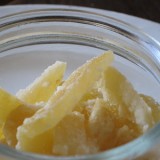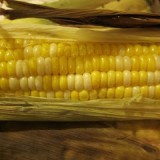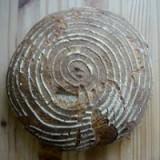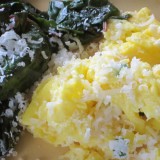 |
| Bonito flakes, available at any Japanese market. |
We conclude our Japanese themed week with the sauce that’s sort of the unified field theory of Japanese cooking: dashi. It’s in everything from noodle dishes to sauces to miso soup and it cooks up in just minutes. Dashi contains two ingredients, kombu (a kind of kelp) and bonito (shaved, fermented fish flakes). It’s the backbone of Japanese cooking, but we think it’s gentle, savory character could adapt well to Western-style cooking if you use it as a substitute for vegetable stock.
Dashi only keeps a few days in the fridge, so the secret to using it regularly is to freeze half of every batch you make.
Next Friday we’ll post a recipe for vegetables simmered in dashi. This is a classic Japanese cooking technique, and we’ve become very fond of it as an alternative to our usual saute/steam/bake repertoire.
Sonoko Sakai, who taught the soba noodle class we described in an earlier post wrote an article on dashi complete with a detailed recipe.
As an aside, I’m really interested in any of you who have foraged your own edible seaweed–if that’s you, please leave a comment.





Vegetarians can get kombu without the fish flakes and it is still damn tasty 🙂
You’re absolutely right, Sara. Mr. H should have mentioned that. To make it from scratch, you just follow the recipe but omit the flakes. Similarly, if you don’t have kombu,you can make a quick broth with bonito only.
Last year when we had a Resilency Ranger trip to the beach, we did not manage to find any clams, but we did find edible seaweed…
http://artisanry.blogspot.com/2011/09/on-sea-vegetables.html
Here is a link to my friend’s youtube channel … http://www.youtube.com/watch?v=6j1BdJv6N3g … They show their adventures about harvesting seaweed on the west coast. Enjoy!
There’s three types of dashi, one is a soaked kombu, the others are a first simmered dashi/kombu, the last is a second simmered dashi/kombu with more flakes added. All three have different purposes I think.. 🙂 I make my udon broth this way now, I used to use hondashi granules (which most people do who don’t want to make dashi stock from scratch). It seems hard to find one without msg though, hence the switch to fresh stuff.